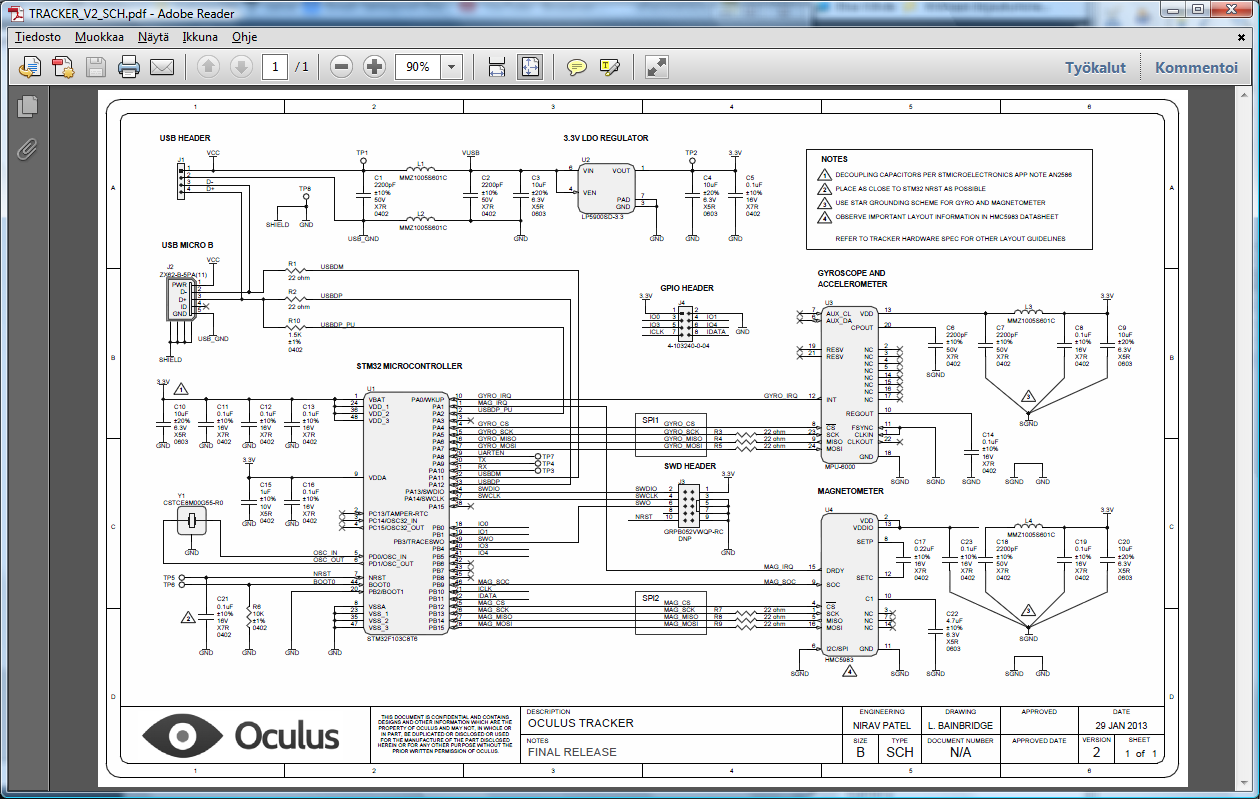This is a cool addition to open sourced hardware announcements: Oculus open-sources original Rift developer kit’s firmware, schematics, and mechanics. When Oculus DK2 out, Oculus decided it was time to put out the DK1 virtual reality kit technical details to the community. Kicking off the Oculus Connect conference in Los Angeles this weekend, Oculus’s Nirav Patel announced that the original Oculus Rift developer kit (DK1) is now fully open-source, with the exception of the pieces that aren’t actually in production anymore (the display). Oculus is hoping the community will come together to make some easy 3D printable files and the like. You can find the files at github.

3 Comments
Tomi Engdahl says:
Teardown: Oculus Rift Dev Kit 2 by iFixit
http://www.eetimes.com/document.asp?doc_id=1323326&
Oculus Rift’s Developer’s Kit 2 (DK2) exhibits techniques for lightening weight while improving cost and function.
iFixit found Oculus Rift Developer’s Kit an easy target. It’s relatively simple to get into and poke around, hence iFixit gave it an enthusiastic 9 on its repairability scale
Tomi Engdahl says:
Hands-on: Gear VR is better than smartphone VR has a right to be
Or: Why the Galaxy Note 4 is the first phone I want to strap to my face.
http://arstechnica.com/gaming/2014/09/hands-on-gear-vr-is-better-than-smartphone-vr-has-a-right-to-be/
Over the last few years, I’ve tried a number of virtual reality “solutions” that involve popping a smartphone into some sort of mask that straps to your face. On the surface, it seems like a natural fit to use a phone as a combination virtual reality display, head-tilt sensor, and processor that avoids the need to tether to a bulky PC tower.
Unfortunately, every one of the prototype phone-based VR devices I’d tried delivered an on-the-cheap virtual reality experience that ranged from awful to mediocre. Issues with optics, frame rate, and accurate head tracking have plagued all of these efforts to the extent that I began to think modern cell phones just weren’t up to the task of driving convincing virtual reality.
Thus, I was a bit skeptical of Gear VR, Samsung’s recently announced hardware effort that turns the upcoming Galaxy Note 4 smartphone into a VR headset using a holster powered by Rift maker Oculus. The middling hands-on experience with Gear VR reported by our own Ron Amadeo earlier this month didn’t really change my impressions, either.
One big leg up Gear VR has over previous phone-based virtual reality systems—and even over current Oculus development kits—is its impressive resolution. The 1440p, 515 PPI display on the Galaxy Note 4 doesn’t totally do away with the problem of visible pixels, but it’s above or equal to most any other consumer-grade VR product on the horizon.
The only thing that really breaks this immersion is the lack of any lateral head tracking on the Gear VR. Unlike the Rift DK2, which uses an external camera to figure out when your head changes position, Gear VR has no way to account for any head movements, aside from angular direction. Very quickly, you learn not to lean in to look more closely at a virtual object unless you want to feel your stomach drop.
Apple Wearable VR Headset says:
I don’t even understand how I finished up
here, however I believed this post was once great.
I do nnot recognise who you’re but certainly yyou are going to a well-known blogger if you aren’t
already.Cheers!